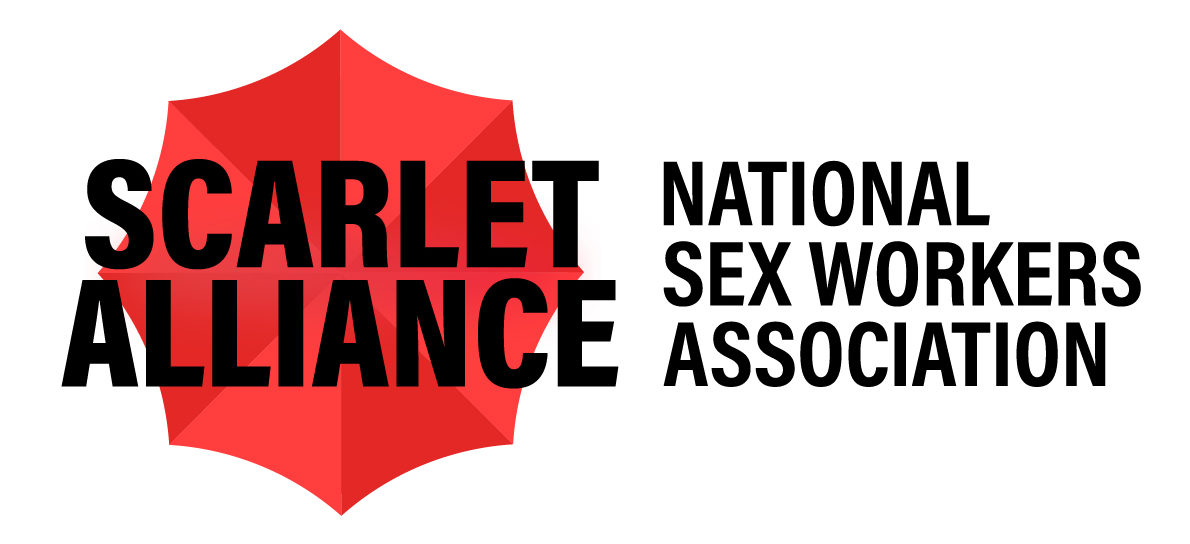This post is also available in:
![]() English (อังกฤษ)
English (อังกฤษ) ![]() 简体中文 (จีนประยุกต์)
简体中文 (จีนประยุกต์) ![]() 한국어 (เกาหลี)
한국어 (เกาหลี)
ไวรัสที่ทำให้ภูมิคุ้มกันของมนุษย์บกพร่อง (HIV) เป็นไวรัสที่ติดต่อทางเลือด (BBV) และโรคติดต่อทางเพศสัมพันธ์ (STI) ที่ส่งผลกระทบต่อระบบภูมิคุ้มกันของร่างกาย เอชไอวีที่ไม่ได้รับรักษาจะทำลายเซลล์ที่ช่วยให้ร่างกายแข็งแรงลงช้า ๆ จากการต่อสู้กับโรค
หากไม่ได้รับการรักษา เอชไอวีอาจจะทำให้ระบบภูมิคุ้มกันอ่อนแอลงอย่างมากภายในระยะเวลา 10 ปี เมื่อถึงตอนนี้ร่างกายจะไม่สามารถต่อสู้กับเชื้อโรคหรือหยุดการพัฒนาของเชื้อมะเร็งได้อีกต่อไป ภาวะนี้เรียกว่าภาวะภูมิคุ้มกันบกพร่องหรือเอดส์ (AIDS) เอดส์พบได้น้อยมากในออสเตรเลียเนื่องจากมีวิธีควบคุมเชื้อเอชไอวีที่มีประสิทธิภาพสูง
ปัจจุบันยังไม่มียารักษาเอชไอวี แต่ผู้ติดเชื้อเอชไอวีที่เข้ารับการรักษาด้วยยาต้านไวรัสที่มีประสิทธิภาพ จะไม่พัฒนาไปเป็นเอดส์ และสามารถมีชีวิตที่ยืนยาวและมีสุขภาพดีได้ เนื่องจากยาเหล่านี้จะช่วยยับยั้งการแบ่งตัวของไวรัสในเลือด (‘ปริมาณเชื้อไวรัสในเลือด’) และช่วยให้ระบบภูมิคุ้มกันของร่างกายแข็งแรงขึ้น
การรักษาการติดเชื้อเอชไอวีที่มีประสิทธิภาพจะช่วยลดปริมาณเชื้อไวรัสในเลือดให้น้อยลงจนอยู่ในระดับที่ตรวจไม่เจอเชื้อ ซึ่งก็หมายความว่าพวกเขาไม่สามารถแพร่เชื้อเอชไอวีไปยังคู่นอน (ไม่สามารถแพร่เชื้อต่อได้) สิ่งนี้เรียกว่า ‘ไม่เจอ เท่ากับ ไม่แพร่ (U=U)’
การตีตราและการเลือกปฏิบัติ
ถึงแม้ว่าจะมีการปรับปรุงการรักษาและคุณภาพชีวิตจนดีขึ้นมากแล้ว แต่การตีตราและการเลือกปฏิบัติเกี่ยวกับเอชไอวียังคงมีอยู่ ผู้ที่มีเชื้อเอชไอวีอาจถูกเลือกปฏิบัติและต้องอยู่อย่างโดดเดี่ยวเนื่องจากความเชื่อและทัศนคติที่ล้าสมัย ไม่ถูกต้อง และเป็นอันตราย ซึ่งอาจส่งผลกระทบต่อสุขภาพจิต สุขภาพกายและสุขภาพทางสังคม คุณภาพชีวิตโดยรวม เสถียรภาพทางการเงินและการเข้าถึงบริการดูแลสุขภาพของพวกเขาได้
การตีตราผู้ที่มีเชื้อเอชไอวีอาจทำให้ผู้มีเชื้อเอชไอวีเข้าไม่ถึงการรักษาและการดูแลที่เหมาะสม หรืออาจเป็นอุปสรรคต่อการเข้ารับการตรวจเอชไอวีในผู้ที่มีความเสี่ยงสูง เป็นเรื่องปกติที่ผู้มีเชื้อเอชไอวีจะเริ่มตีตราตนเอง โดยเริ่มยอมรับทัศนคติเชิงลบเกี่ยวกับเอชไอวีว่าเป็นเรื่องปกติและกล่าวโทษตนเอง
การตระหนักถึงการตีตราและการเลือกปฏิบัติเกี่ยวกับเอชไอวีมีความจำเป็นต่อการลดการแพร่เชื้อเอชไอวีและยกระดับคุณภาพชีวิตของผู้ที่มีเชื้อร้ายแรงนี้
ติดต่อองค์กรภาคประชาสังคม PLHIV (ผู้ที่มีเชื้อเอชไอวี)ในพื้นที่เพื่อสอบถามข้อมูลและขอความช่วยเหลือเกี่ยวกับการจัดการกับปัญหาการตีตราและการเลือกปฏิบัติ
ลักษณะผิดสังเกตและอาการ
คนที่มีเชื้อเอชไอวีเป็นครั้งแรกอาจไม่แสดงอาการ ส่วนคนอื่นอาจมีอาการป่วยคล้ายกับเป็นไข้หวัดใหญ่เรียกว่า ‘อาการป่วยจากปฏิกิริยาตอบโต้ของร่างกายโดยการสร้างแอนติบอดี้’ ซึ่งมักจะเกิดขึ้นประมาณ 1-4 สัปดาห์หลังติดเชื้อ และอาจแยกจากอาการติดเชื้ออื่น ๆ ได้ยาก
คนที่มีเชื้อเอชไอวีเป็นครั้งแรกอาจ
- มีไข้
- เหนื่อยล้าผิดปกติ
- อาการบวมที่ต่อมน้ำเหลือง
- คลื่นไส้และอาเจียน
- แผลเจ็บที่ปาก ทวารหนักหรืออวัยวะเพศ
- อาการปวดศีรษะ
- ผื่น โดยปกติจะเกิดขึ้นบริเวณลำตัว
- ปวดกล้ามเนื้อและข้อต่อ
- น้ำหนักตัวลดลง
หลังจากอาการป่วยในช่วงแรก ผู้ที่มีเชื้อเอชไอวีที่ไม่ได้รับการรักษามักจะไม่มีอาการไปอีกหลายปี แม้ว่าจะมีเชื้อไวรัสอยู่ในร่างกายก็ตาม ด้วยเหตุนี้ การตรวจเอชไอวีอย่างสม่ำเสมอจึงเป็นวิธีที่ดีที่สุดในการตรวจว่ามีเชื้อหรือไม่ คุณสามารถดูรายชื่อคลินิกสุขภาพทางเพศที่ยินดีต้อนรับคนทำงานบริการได้ที่สถานที่ตรวจของเรา
โปรดทราบว่าผู้ที่มีเชื้อเอชไอวีจะไม่มีอาการให้สังเกตเมื่อทำการตรวจลูกค้าหาอาการของ STI
การแพร่เชื้อ
ผู้ที่มีเชื้อเอชไอวีที่เข้ารับการรักษาอย่างมีประสิทธิภาพจะไม่สามารถแพร่เชื้อเอชไอวีให้คู่นอนได้ เนื่องจากการรักษาที่มีประสิทธิภาพสามารถลดระดับเชื้อเอชไอวีในน้ำอสุจิหรือสารคัดหลั่งจากช่องคลอดให้น้อยลงจนถึงระดับที่ตรวจไม่เจอเชื้อ
โดยทั่วไปแล้วเชื้อเอชไอวีจะแพร่สู่กันก็ต่อเมื่อผู้ที่มีเชื้อไม่ทราบว่าร่างกายมีเชื้อไวรัสอยู่ หรืออยู่ในระยะแรกของการติดเชื้อเอชไอวี เมื่อปริมาณเชื้อไวรัสในเลือด (จำนวนเชื้อไวรัสในร่างกาย) สูง
ของเหลวในร่างกายที่สามารถแพร่เชื้อเอชไอวีได้คือเลือด น้ำอสุจิ สารคัดหลั่งจากช่องคลอด และน้ำนมแม่เท่านั้น
การแพร่เชื้อสามารถเกิดได้จาก
- การมีเพศสัมพันธ์ทางทวารหนักหรือช่องคลอดโดยไม่ป้องกัน เช่น ไม่สวมถุงยางอนามัย ไม่รับประทานยา PrEP หรือปริมาณเชื้อไม่อยู่ในระดับที่ตรวจไม่เจอเชื้อ
- การมีเพศสัมพันธ์ทางปากโดยไม่ป้องกัน ถึงแม้ว่าจะเกิดได้น้อยมาก
- การใช้เข็มฉีดยาหรืออุปกรณ์ฉีดร่วมกัน
- ‘การบาดเจ็บจากเข็ม’ (เช่น ระหว่างให้บริการ BDSM บางประเภท)
- เลือดหรือสารคัดหลั่งจากร่างกายเข้าตา
- การสัก การเจาะและการกระทำอื่น ๆ ที่ใช้เข็มหรืออุปกรณ์ที่ไม่ผ่านการฆ่าเชื้อ
- การแพร่เชื้อจากมารดาสู่ทารกในระหว่างตั้งครรภ์ ให้กำเนิดบุตรหรือให้นมบุตร
- ได้รับบริจาคเลือด ถึงแม้ว่าปัจจุบันจะเกิดได้น้อยมาก
เอชไอวีไม่แพร่สู่กันผ่าน
- ปัสสาวะ อุจจาระ น้ำลาย อาเจียนหรือเหงื่อ (ตราบเท่าที่ไม่มีเลือดปะปน)
- การจูบ
- การไอหรือจาม
- การจับมือ
- การใช้อุปกรณ์รับประทานอาหารหรือแก้วน้ำร่วมกัน
เชื้อเอชไอวีติดต่อกันได้บ่อยที่สุดจากการมีเพศสัมพันธ์ทางทวารหนักหรือช่องคลอดโดยไม่ป้องกัน การมี STI ที่ทำให้มีแผลหรือแผลเปื่อยบริเวณอวัยวะเพศ จะเพิ่มความเสี่ยงในการแพร่เชื้อเอชไอวีขณะมีเพศสัมพันธ์
การแพร่เชื้อเอชไอวีและประจำเดือน (รอบเดือน)
เลือดประจำเดือนสัมผัสกับผิวหนังที่ไม่มีบาดแผลจะไม่ก่อให้เกิดความเสี่ยงในการแพร่เชื้อเอชไอวี หากสัมผัสกับผิวหนังที่ถลอกหรือกลืนเข้าไป ก็อาจจะแพร่เชื้อเอชไอวีได้แต่ก็มีโอกาสน้อย เลือดประจำเดือนของผู้ที่มีเชื้อเอชไอวีในระดับที่ตรวจไม่เจอจะไม่สามารถแพร่เชื้อเอชไอวีได้
การป้องกัน
บางสิ่งที่คุณสามารถทำได้เพื่อลดความเสี่ยงในการแพร่เชื้อเอชไอวี มีดังต่อไปนี้
- การใช้ถุงยางอนามัย แผ่นยางอนามัย ถุงมือและอุปกรณ์ป้องกันอื่น ๆ ขณะมีเพศสัมพันธ์
- การรักษาเพื่อป้องกัน (TasP) PEP และ PrEP จะช่วยลดความเสี่ยงในการแพร่เชื้อเอชไอวีได้อย่างมีนัยสำคัญ (อ่านข้อมูลเพิ่มเติมได้ด้านล่าง)
- ใช้สารหล่อลื่นสูตรน้ำหรือซิลิโคนระหว่างมีเพศสัมพันธ์ โดยเฉพาะอย่างยิ่ง หากไม่ได้ใช้อุปกรณ์ป้องกัน
- ปกปิดรอยแผล รอยถลอก และบาดแผลด้วยผ้าปิดแผลแบบกันน้ำเพื่อลดแนวโน้มในการติดต่อจากเลือดสู่เลือด
- ระมัดระวังโอกาสที่จะเกิดหรือมีเลือดในสถานที่ทำงานและลดความเสี่ยงในการสัมผัสเลือดของผู้อื่น
- ล้างมือให้สะอาดเสมอ หากคุณสัมผัสกับเลือดของผู้อื่น
- ใช้กระดาษอเนกประสงค์ น้ำสบู่ ไอโซโพรพิลแอลกอฮอล์ หรือสารฟอกขาวที่ไม่เจือจางเพื่อเช็ดทำความสะอาดเลือดเสมอ สวมถุงมือหากทำได้
- Viraclean น้ำยาทำความสะอาดที่ใช้บ่อยในอุตสาหกรรมงานบริการสามารถป้องกันเชื้อเอชไอวีได้ คุณสามารถใช้ทำความสะอาดเซ็กส์ทอยและฆ่าเชื้อบนพื้นผิวต่าง ๆ ที่อาจจะสัมผัสกับสารคัดหลั่งของร่างกายผู้ที่มีเชื้อ
- ใช้เข็มฉีดยาและอุปกรณ์ฉีดที่ผ่านการฆ่าเชื้อแล้วเสมอ และกำจัดทิ้งอย่างปลอดภัย คุณสามารถใช้เว็บไซต์นี้เพื่อค้นหาโครงการเข็มฉีดยาใกล้บ้านคุณ (NSP)
- การหมั่นตรวจสุขภาพทางเพศสามารถช่วยให้ตรวจพบ STI ที่อาจทำให้คุณเสี่ยงติดเชื้อเอชไอวี คุณสามารถดูรายชื่อคลินิกสุขภาพทางเพศที่ยินดีให้บริการคนทำงานบริการได้ที่สถานที่ตรวจของเรา
การรักษาโดยการป้องกัน (TasP)
การรักษาโดยการป้องกัน (TasP) คือการใช้ยาเพื่อป้องกันการแพร่เชื้อเอชไอวีไปยังคู่นอน
การรักษาเอชไอวีช่วยทำให้ระบบภูมิคุ้มกันของผู้ที่มีเชื้อเอชไอวียังคงทำงานได้ดีและลดความเสี่ยงในการลุกลามของโรคที่เกิดจากเชื้อเอชไอวี การรักษาเหล่านี้สามารถช่วยทำให้ระดับเชื้อเอชไอวี (ปริมาณเชื้อไวรัสในเลือด) ในเลือดและสารคัดหลังอื่น ๆ ของร่างกายอยู่ในระดับที่ ‘ตรวจไม่เจอเชื้อ’
ผู้ที่มีเชื้อเอชไอวีส่วนใหญ่ในออสเตรเลียจะรับประทานยาเพียงวันละหนึ่งเม็ด ซึ่งมีตัวยา 2-3 ชนิดรวมกัน
การทดลองล่าสุด (HPTN052 PARTNER และการวิจัยOpposites Attract) ของออสเตรเลียได้ยืนยันว่าการรักษาเพื่อป้องกันสามารถช่วยป้องกันการแพร่เชื้อเอชไอวีได้ ผลการศึกษาของโครงการวิจัยเหล่านี้พบว่าไม่มีการแพร่เชื้อเอชไอวีเกิดขึ้นในคู่รักที่ฝ่ายหนึ่งมีเชื้อเอชไอวีเป็นบวกและอีกฝ่ายเป็นลบ โดยที่ฝ่ายที่มีเชื้อเอชไอวีเป็นบวกนั้นมีปริมาณเชื้อไวรัสในเลือดอยู่ในระดับที่ตรวจไม่เจอเชื้อ
ไม่มีความเสี่ยงในการแพร่เชื้อเอชไอวีจากผู้ที่เข้ารับการรักษาที่ปริมาณเชื้อไวรัสในเลือดอยู่ในระดับที่ตรวจไม่เจอเชื้อ
การป้องกันโรคก่อนสัมผัส (PrEP)
การป้องกันโรคก่อนสัมผัส (PrEP) คือการใช้ยาต้านเชื้อเอชไอวีอย่างสม่ำเสมอในผู้ที่ไม่มีเชื้อเอชไอวี เพื่อลดความเสี่ยงในการติดเชื้อเอชไอวี
อ่านเกี่ยวกับ PrEP ของเราหรือติดต่อองค์กรเพื่อคนทำงานบริการในพื้นที่เพื่อขอข้อมูลเพิ่มเติม
การป้องกันโรคหลังการสัมผัส (PEP)
การป้องกันโรคหลังการสัมผัส (PEP) มีไว้สำหรับผู้ที่ไม่มีเชื้อเอชไอวีที่อาจสัมผัสเชื้อเอชไอวี PEP คือการให้ยาป้องกันการติดเชื้อเอชไอวีต่อเนื่องเป็นระยะเวลาหนึ่งเดือน ซึ่งหากรับประทานภายใน 72 ชั่วโมง (3 วัน) หลังจากการสัมผัสเชื้อเอชไอวีแล้วจะสามารถลดโอกาสการติดเชื้อเอชไอวีลงได้อย่างมาก หลังจากมีความเสี่ยง เช่น ถุงยางอนามัยหลุดหรือฉีกขาด
หาอ่านข้อมูลเกี่ยวกับ PEP ของเราหรือติดต่อองค์กรเพื่อคนทำงานบริการในพื้นที่เพื่อขอข้อมูลเพิ่มเติม
การตรวจ
วิธีเดียวที่จะทราบว่าคุณติดเชื้อเอชไอวีหรือไม่คือการเข้ารับการตรวจ ข้อมูลบางอย่างเกี่ยวกับการตรวจหาเชื้อเอชไอวีมีดังต่อไปนี้
คุณสามารถดูรายชื่อคลินิกสุขภาพทางเพศที่ยินดีต้อนรับคนทำงานบริการได้ที่สถานที่ตรวจของเรา
วิธีตรวจ
- คุณสามารถตรวจหาเชื้อเอชไอวีได้ด้วยการขอรับการตรวจเลือดจากแพทย์หรือที่คลินิกสุขภาพทางเพศ
- บางสถานที่ให้บริการตรวจแบบรวดเร็ว การตรวจจะเป็นการเก็บตัวอย่างเลือดโดยเจาะที่ปลายนิ้วหรือเก็บตัวอย่างน้ำลาย การตรวจนี้สามารถแจ้งผลได้ภายใน 10-20 นาที แต่ผลตรวจที่เป็นบวกจะต้องได้รับการยืนยันโดยการตรวจเลือดอีกครั้งเสมอ
- การตรวจด้วยตนเอง (หรือที่เรียกว่าการตรวจที่บ้าน) จะใช้วิธีเจาะเลือดจากปลายนิ้ว เช่นเดียวกับการตรวจแบบรวดเร็ว คุณอาจจะทราบผลภายใน 10-20 นาที แต่ผลตรวจที่เป็นบวกจะต้องได้รับยืนยันโดยการตรวจเลือดในห้องปฏิบัติการอีกครั้งเสมอ ปัจจุบัน มีชุดตรวจหาเชื้อเอชไอวีด้วยตนเองประเภทเดียวที่อนุญาตให้จำหน่ายได้ในออสเตรเลีย อ่านข้อมูลเพิ่มเติมได้ในเอกสารการตรวจหาเชื้อเอชไอวีด้วยตนเองของ AFAO
ควรตรวจเมื่อใด
- หากคุณคิดว่าคุณได้รับเชื้อเอชไอวี ให้พบแพทย์/แผนกฉุกเฉินเพื่อขอ PEP ภายใน 72 ชั่วโมง จากนั้น ให้เข้ารับการตรวจตามที่แพทย์สั่ง
- ตรวจอย่างน้อยปีละสองครั้ง ให้เป็นหนึ่งในการตรวจสุขภาพทางเพศตามปกติ
- คนส่วนใหญ่ที่รับเชื้อเอชไอวีจะตรวจได้ผลบวกภายใน 1 เดือน สำหรับคนส่วนน้อย อาจจะใช้เวลานานถึง 3 เดือน จึงตรวจพบเชื้อเอชไอวี
ข้อมูลอื่น ๆ
- คลินิกสุขภาพทางเพศของรัฐจะไม่เรียกเก็บค่ารักษาโดยเรียกเก็บจากรัฐบาลแทน การตรวจก็น่าจะฟรีแม้ว่าคุณไม่มีสวัสดิการ Medicare สำหรับข้อมูลเพิ่มเติมเกี่ยวกับการตรวจเอชไอวี หากคุณไม่มีสวัสดิการ Medicare โปรดเข้าไปที่ทางเลือกในการตรวจของหน่วยบริการเอชไอวีและไวรัสตับอักเสบสำหรับผู้ที่มีความหลากหลายทางภาษาและวัฒนธรรม
- คุณอาจจะเสียค่าธรรมเนียมหรือฟรีโดยแพทย์เรียกเก็บเงินจากรัฐบาล หากคุณพบแพทย์ GP
- การวินิจฉัยตั้งแต่เนิ่น ๆ สำคัญอย่างมากและสามารถหยุดจากปัญหาสุขภาพในระยะยาวได้
- เชื้อเอชไอวีจะติดได้ง่ายที่สุดในช่วง ‘ระยะฟักตัว’ (ช่วงเวลาตั้งแต่ที่คุณติดเชื้อไวรัสไปจนถึงช่วงที่เชื้อมีปริมาณมากจนตรวจเจอ)
การรักษา
ไม่มีวิธีรักษาเชื้อเอชไอวีให้หายขาดได้ แต่การรักษาสามารถช่วยป้องกันไม่ให้ไวรัสลุกลามและแพร่เชื้อได้ ซึ่งจะช่วยยกระดับคุณภาพชีวิตของผู้ที่มีเชื้อเอชไอวี
ข้อมูลที่คุณต้องทราบเกี่ยวกับการรักษาการติดเชื้อเอชไอวีมีดังนี้
วิธีรักษา
- ยาต้านไวรัส (ART)
- การรักษาเอชไอวีจะได้ผล เมื่อรักษาอย่างถูกต้อง ซึ่งจะต้องรักษาไปตลอดชีวิต
- โดยปกติ ผู้ที่มีเชื้อเอชไอวีจะได้รับยาต้านไวรัสหลายชนิดพร้อมกัน
- ผู้ที่มีเชื้อเอชไอวีส่วนใหญ่ในออสเตรเลียจะรับประทานยาเพียงวันละเม็ด โดยมีตัวยา 2-3 ชนิดรวมกัน
- การรักษาเอชไอวีแบบฉีดที่ออกฤทธิ์ได้นานเป็นยารักษาเอชไอวี ที่ฉีดทุกสองสามสัปดาห์ แทนที่จะเป็นการรับประทานยาทุกวัน เช่นเดียวกับยาประเภทอื่น ๆ ยาตัวใหม่ก็มาพร้อมกับข้อดีและข้อเสีย คุณและแพทย์ควรตัดสินใจเลือกใช้ยาที่เหมาะกับคุณมากที่สุด อ่านข้อมูลเพิ่มเติมเกี่ยวกับการรักษาเอชไอวีแบบฉีดได้ที่นี่
ค่าใช้จ่ายและข้อมูลอื่น ๆ
- หากคุณมีบัตร Medicare ก็สามารถซื้อยาผ่านโครงการสิทธิประโยชน์ทางยาและเวชภัณฑ์ (PBS) ได้ในราคาที่ถูกกว่า
- บางรัฐยังออกค่าใช้จ่ายที่เหลือให้ ทำให้ผู้ที่มีเชื้อเอชไอวีเข้ารับการรักษาได้ฟรีโดยไม่เสียค่าใช้จ่าย
- เมื่อปี 2022 รัฐบาลได้ให้คำมั่นว่าจะทำให้ผู้ที่มีเชื้อเอชไอวีซึ่งไม่มีสิทธิ์ในสวัสดิการ Medicare สามารถได้รับยาฟรีจากร้านขายยาในโรงพยาบาลที่ได้รับเงินทุนจากรัฐบาล ติดต่อ NAPWHA หากคุณต้องการความช่วยเหลือเกี่ยวกับการรักษาโดยไม่ต้องใช้ Medicare
- แพทย์ผู้เชี่ยวชาญด้านเชื้อเอชไอวีคือบุคคลที่ดีที่สุดในการปรึกษาเรื่องการรักษา หากแพทย์คุณไม่มีประสบการณ์รักษาเอชไอวี ให้นัดพบแพทย์ที่คลินิกสุขภาพทางเพศ
- การรักษาช่วยลดความเสี่ยงในการแพร่เชื้อเอชไอวีจากมารดาสู่ทารกในระหว่างตั้งครรภ์ได้เป็นอย่างมาก
- ผู้ที่มีเชื้อเอชไอวีส่วนใหญ่จะตรวจไม่เจอเชื้อภายใน 1-6 เดือนหลังเข้ารับการรักษาและรับประทานยาตามที่แพทย์สั่ง
หากคุณได้รับการวินิจฉัยว่ามีเชื้อเอชไอวี มีความช่วยเหลือและข้อมูลของหน่วยงานที่ให้บริการในแต่ละรัฐและดินแดนในออสเตรเลีย นอกจากนี้ คุณยังสามารถติดต่อองค์กรเพื่อคนทำงานบริการในพื้นที่เพื่อขอข้อมูลเพิ่มเติม
เอชไอวีอาจจะกระทบต่องานของฉันได้อย่างไร
ข้อควรพิจารณาในทางปฏิบัติ
- ไม่มีลักษณะผิดสังเกตของเชื้อเอชไอวีที่คุณสามารถมองหาเมื่อทำการตรวจลูกค้า
- วิธีเดียวที่จะทราบว่าคุณมีเชื้อเอชไอวีหรือไม่คือการเข้ารับการตรวจ
- คนทำงานบริการที่ติดเชื้อเอชไอวีสามารถใช้ชีวิตที่ดี มีสุขภาพที่ดี แต่อาจจะได้รับผลกระทบจากการถูกตีตราและกฎหมายที่กำหนดให้การทำงานบริการทั้งที่ยังมีเชื้อเอชไอวีอยู่นั้นมีความผิด ความช่วยเหลือสนับสนุนจากเพื่อนคนทำงานบริการจึงเป็นประโยชน์อย่างมาก มีองค์กรเพื่อคนทำงานบริการและ องค์กรภาคประชาสังคม PLHIV (ผู้ที่มีเชื้อเอชไอวี)อยู่ในทุกรัฐและดินแดน
- ผู้ที่มีเชื้อเอชไอวีส่วนใหญ่จะมีปริมาณเชื้อไวรัสในเลือดอยู่ในระดับที่ตรวจไม่เจอเชื้อภายใน 1-6 เดือนหลังเข้ารับการรักษาและรับประทานยาตามที่แพทย์สั่ง
- หากคุณได้รับการวินิจฉัยว่ามีเชื้อเอชไอวี คุณไม่จำเป็นต้องรอจนกว่าจะตรวจไม่เจอเชื้อ จึงจะมีเพศสัมพันธ์ได้ การใช้มาตรการป้องกันที่อย่างเหมาะสม เช่น การใช้ถุงยางอนามัยและแผ่นยางอนามัยพร้อมสารหล่อลื่น การให้คู่นอนรับประทานยา PrEP การระมัดระวังในการสัมผัสเลือดและของเหลว และการเข้ารับการตรวจสุขภาพทางเพศอย่างสม่ำเสมอ สามารถลดความเสี่ยงในการแพร่เชื้อเอชไอวีให้ผู้อื่นได้อย่างมีนัยสำคัญ
- ผู้ที่มีเชื้อเอชไอวีอาจหมดประจำเดือนเร็วกว่าผู้ที่ไม่มีเชื้อเอชไอวีเล็กน้อย ซึ่งอาจกระทบต่อการมีเพศสัมพันธ์ คุณสามารถปรึกษาแพทย์หรือคนทำงานบริการคนอื่นเกี่ยวกับเพศสัมพันธ์ในวัยหมดประจำเดือนได้
- ผู้ที่มีเชื้อเอชไอวีมักประสบปัญหาการแข็งตัวของอวัยวะเพศมากกว่าคนทั่วไป
- ยารักษาเอชไอวีบางประเภทอาจจะเพิ่มหรือลดระดับยารักษาอาการหย่อนสมรรถภาพทางเพศ และอาจทำให้เกิดผลข้างเคียงที่ร้ายแรงได้ ปรึกษาแพทย์ก่อนรับประทานยาอื่น ๆ ร่วมด้วย
- มีความเป็นไปได้ที่จะเกิดปฏิกิริยาระหว่างยาคุมกำเนิดบางชนิดกับยารักษาเอชไอวี อย่าลืมปรึกษาแพทย์ หากคุณจะรักษาเอชไอวีขณะที่ใช้ยาคุมกำเนิด
- บางคนอาจรู้สึกเครียด/วิตกกังวลเกี่ยวกับการมีเพศสัมพันธ์หรืออวัยวะเพศไม่ทำหน้าที่ตามปกติขณะปฏิบัติกิจหลังจากตรวจพบเชื้อเอชไอวี การขอความช่วยเหลือจากแพทย์ บริการให้ความช่วยเหลือผู้ที่มีเชื้อเอชไอวีในท้องถิ่นและ/หรือองค์กรเพื่อคนทำงานบริการอาจจะช่วยได้
ข้อควรพิจารณาด้านกฎหมายและการแจ้งผลตรวจ
- บางรัฐและดินแดนมีกฎหมายที่กำหนดให้การทำงานบริการขณะที่ป่วยเป็น STI และ/หรือ BBV รวมถึงเอชไอวี มีความผิด อาจมีกฎหมายเกี่ยวกับการป้องกัน BBV และ STI ที่ใช้บังคับกับทุกคนด้วย อ่านข้อมูลเพิ่มเติมสำหรับกฎหมายในเขตที่อยู่ของคุณได้ที่ กฎหมายและ BBV STI และติดต่อองค์กรเพื่อคนทำงานบริการในพื้นที่เพื่อศึกษาข้อมูลเพิ่มเติม ศูนย์กฎหมายเกี่ยวกับเชื้อเอชไอวี/โรคเอดส์ (HALC) ยังสามารถให้ความช่วยเหลือและข้อมูลกฎหมายที่เกี่ยวข้องกับเอชไอวี
- เอชไอวีเป็นโรคที่จำเป็นต้องมีการแจ้งผลทั่วประเทศ ซึ่งก็หมายความว่าผู้ที่ได้รับการวินิจฉัยว่ามีเชื้อเอชไอวีจะถูกรายงานไปยังหน่วยงานสาธารณสุขระดับประเทศโดยไม่เปิดเผยความลับของผู้ป่วย คุณสามารถอ่านข้อมูลเพิ่มเติมเกี่ยวกับข้อกำหนดในเขตที่อยู่ของคุณได้ในกฎหมายและ BBV STI
- การติดตามผู้สัมผัสโรคที่เป็นอดีตคู่นอน (หรือที่เรียกว่า ‘การแจ้งผลแก่ผู้สัมผัสโรค’) เป็นการแจ้งผลแก่ผู้สัมผัสโรค BBV และ STI บางประเภท ซึ่งการแจ้งผลแก่ผู้สัมผัสโรคนี้ควรดำเนินการ โดยคำนึงถึงความเสี่ยงในการแพร่เชื้อและเคารพต่อสิทธิส่วนบุคคลของคนทำงานบริการ องค์กรเพื่อคนทำงานบริการในพื้นที่ของคุณสามารถให้คำแนะนำเกี่ยวกับช่องทางการแจ้งผลแก่ผู้สัมผัสโรคเพื่อรับรองว่าเหมาะสมกับสถานการณ์ของคุณ
